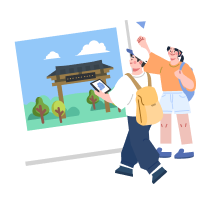Introduction
History Of Korean Temples

Korean Buddhist culture dates back to the three kingdom period in AD 300s. For over a thousand years, it has flourished as the state religion.
During the early Joseon Dynasty era, Confucianism ruled the country, and Buddhism was officially banned. However, it still lived on as a folk religion, and temples became a place where the people can spiritually rely on.
It's still valid, and many locals visit temples to relieve the stress from their daily lives. The way to getting there, the forest, and the creeks, already soothes your mind.
What Is A Templestay?
It literally means staying in a temple. Temple is a home for Buddhist monks, and it is open for outsiders to come for yebul (ceremonial service), but staying over or having a meal was not allowed.
 Source: templestay.com
Source: templestay.com
Buddhist temples gathered and designed the templestay program so that outsiders can experience the authentic lives of Buddhists.
Over 2 million people worldwide have experienced templestays to get away from the hectic daily lives and find their true self within. It's a great way to understand the roots of Korean culture and spend some tranquil time.
Schedule
Schedules will vary according to the temples you visit. But mostly, they will have similar content for a two-day program.
- First Day
| Time | Title |
| 14:00~14:20 | Opening / Learning temple etiquettes |
| 14:20~14:30 | Assigning rooms / Wear a uniform |
| 14:30~15:20 | Temple Tour |
| 15:30~16:00 | Da-Seon (Tea Ceremony) |
| 16:00~16:30 | Sagyeong (Copying Sutras in Golden ink) |
| 16:50~17:30 | Monastic Meal |
| 17:40~18:20 | Watching Sunims playing Dharma instrument / Evening yebul service |
| 18:30~19:30 | 108 Prostrations |
| 20:00~21:0 | Cham-Seon (Seon meditation) |
| 21:00~21:30 | Break out |
| 21:30~04:00 | Lights out |
- Second Day
| Time | Title |
| 03:50~04:20 | Waking up / Make the bed |
| 04:30~05:00 | Morning yebul service |
| 05:00~06:00 | Stretching / Hiking |
| 06:00~08:30 | Monastic meal and Break time |
| 08:30~09:30 | Survey / Group photo / Cleaning |
For a realistic review on a templestay in Korea, check out our latest blog on Hwagyesa templestay.
How to Book
Types Of Templestay
1. One-day Templestay
If you can't afford to stay overnight, you can choose to stay just for a day. You'll be able to participate in most activities such as temple tour, meditation, and tea ceremony.
2. Experience-oriented Templestay
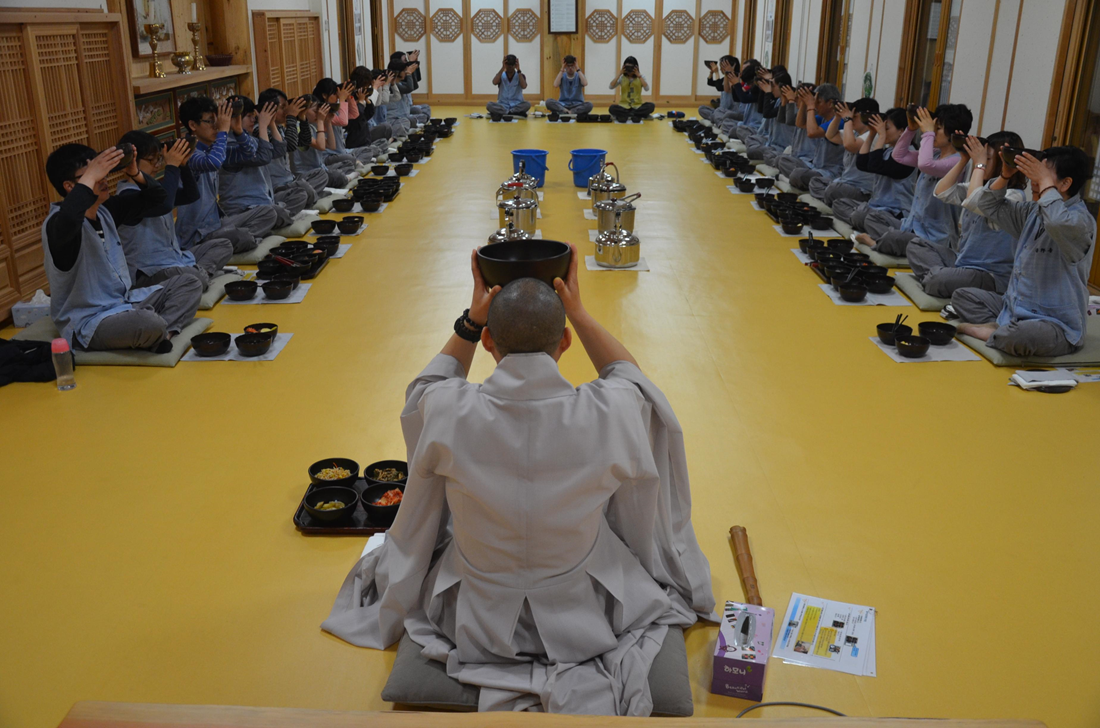
If you want to experience more of the temple life, you need to book for an experience-oriented templestay. You'll join morning chanting, 108 prostrations, traditional Buhhdist meals, meditation, and cultural activities.
3. Rest-oriented Templestay
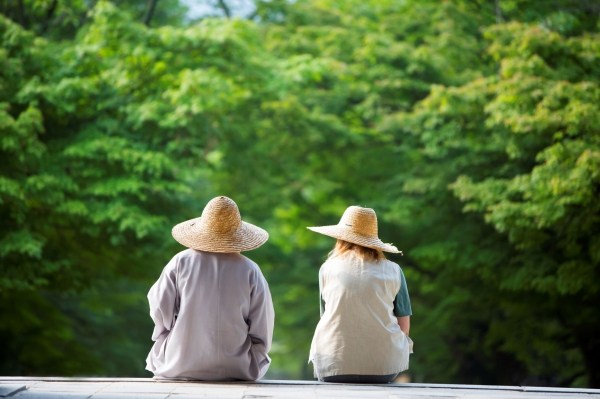
In this program, you are not obliged to do anything. You can take a walk around the temple and the mountains behind it, meditate or participate in the ceremonies if you want. If you have participated in templestays before and have plans for yourself, this program will suit you best.
Reservation Process
1. Enter the official templestay website. Find the templestay that has the best location and the program that you want to experience.
2. Check the available date, number of people and input information needed for the reservation.

Read the descriptions carefully to learn about the program and reservation policies.
3. Make the payment and your reservation will be confirmed. If you need to change your reservation or cancel it contact the temple you booked, or email them at support@templestay.com.
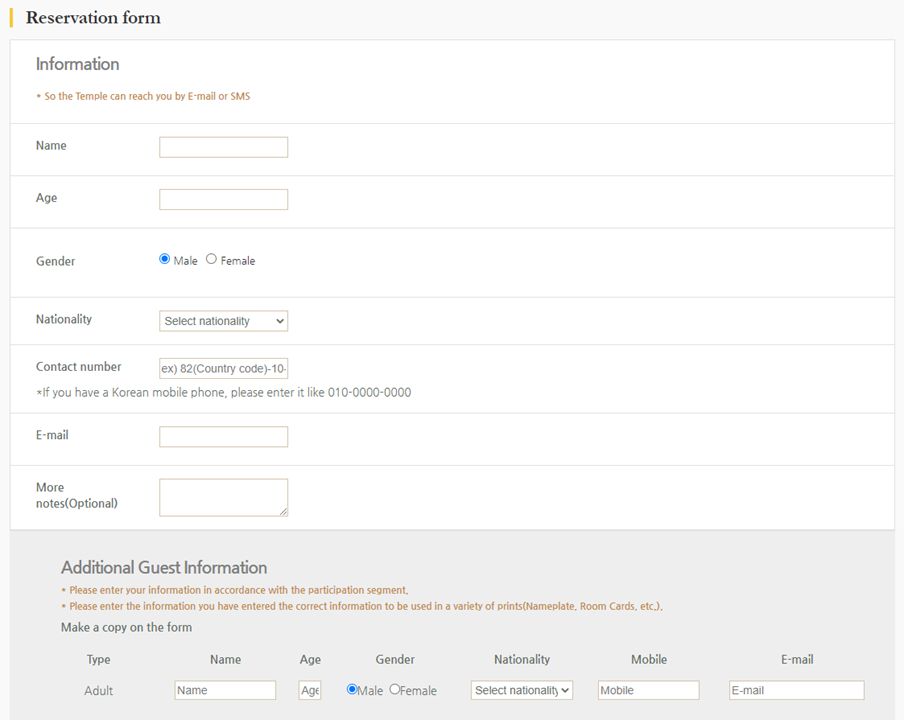
Input accurate information, so that they can contact you in case there are changes to the plan.
List Of Temples
[Seoul]
Address: 서울특별시 강남구 삼성1동 봉은사로 531
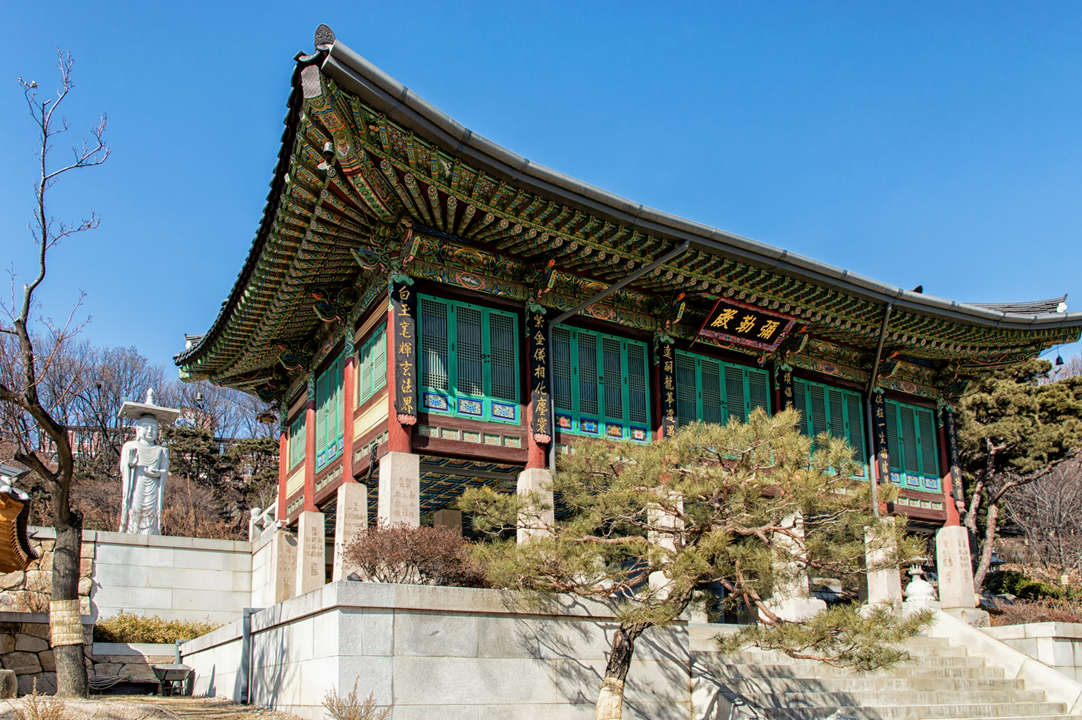 Source: templestay.com
Source: templestay.com
Bongeunsa is located in Gangnam and is the easiest temple to visit from Seoul. It has English programs for foreign travellers, so don't hesitate to visit!
Address: 서울특별시 종로구 구기동 196-2
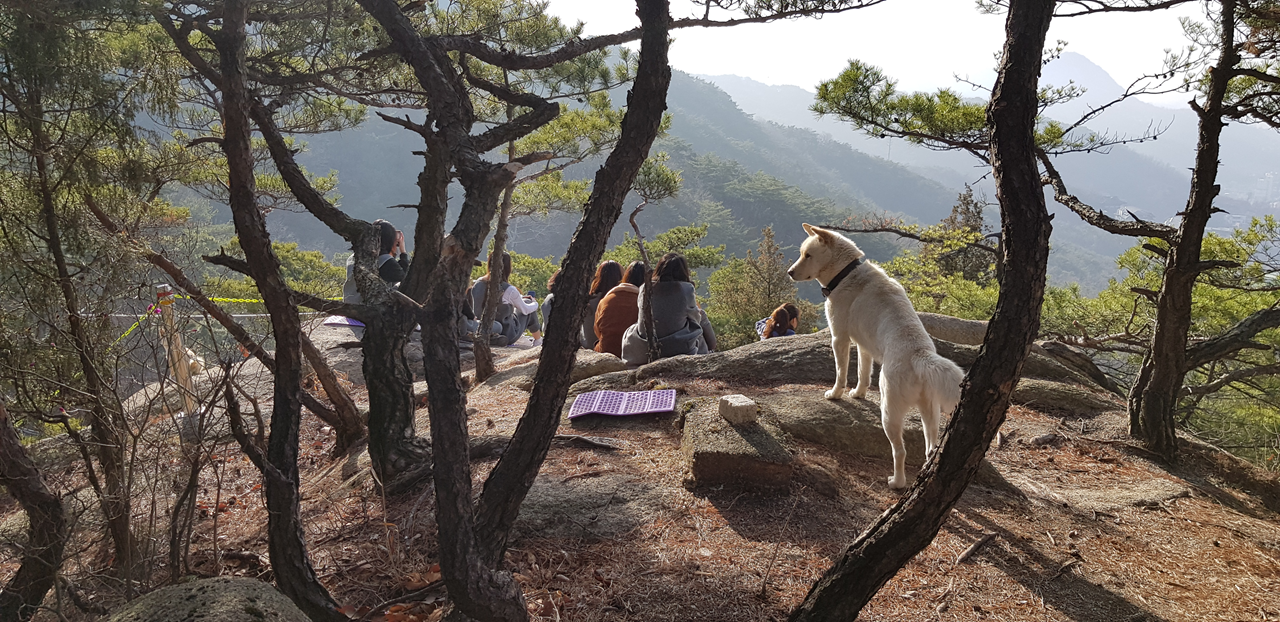 Source: templestay.com
Source: templestay.com
Geumsunsa is located in Jongno, but you'll be surprised you can find such a peaceful place right in the middle of Seoul. It's located in the middle of Mt.Bukhansan, and you can find the best natural sceneries in Seoul here.
Address: 서울특별시 강북구 인수동 화계사길 117
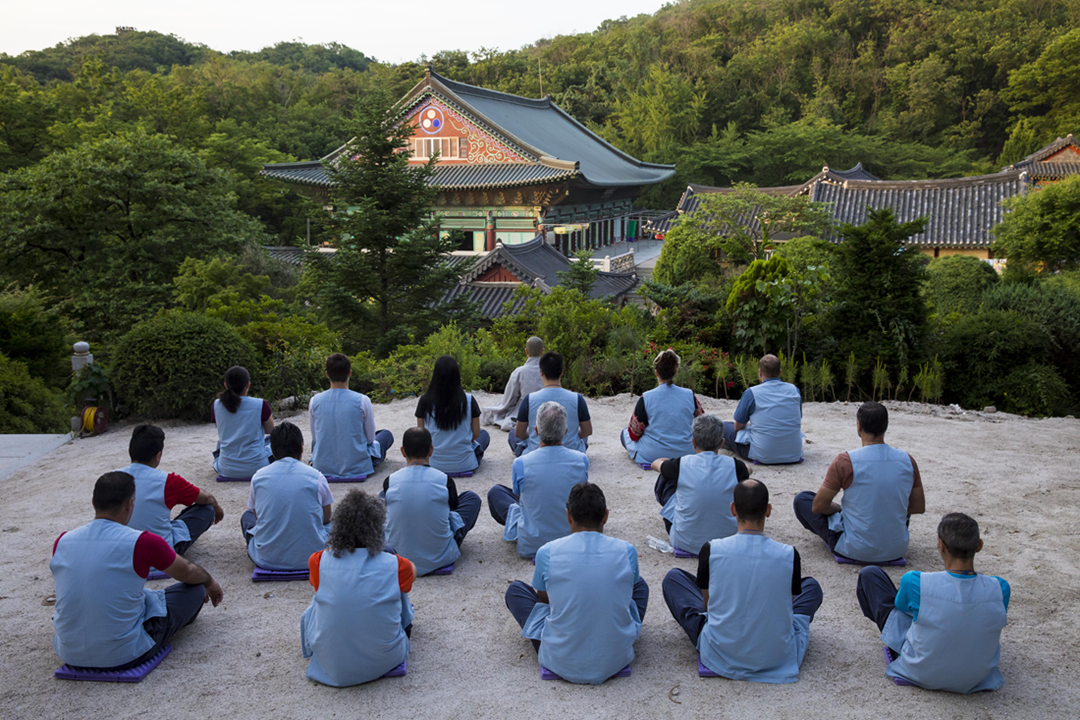 Source: templestay.com
Source: templestay.com
Hwagyesa is located on the edge of Seoul, and you can find a more peaceful experience here. There are education programs for foreign Buddhist students. Check out our latest blog to learn more about a templestay in Hwagyesa.
Address: 서울특별시 양천구 신정동 목동동로 167
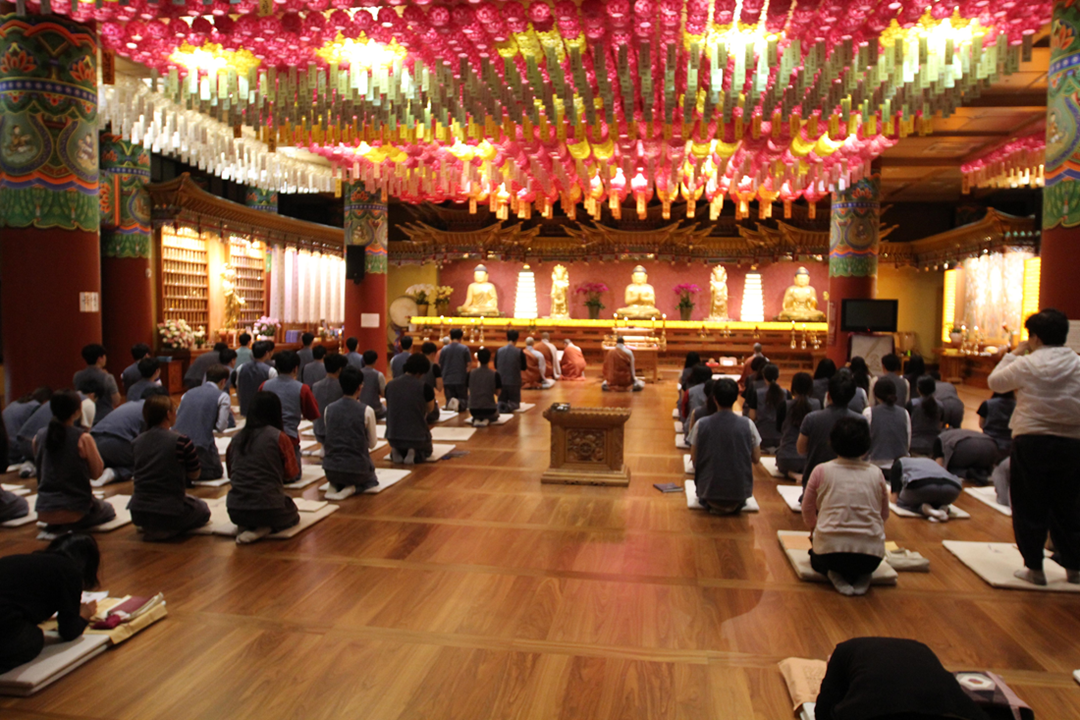 Source: templestay.com
Source: templestay.com
International Seon Center is specifically built for templestays and spread the teachings of Buddha to the public. You can find many activities on Korean Buhhdist cultures here.
Address: 서울특별시 은평구 진관동 진관길 73
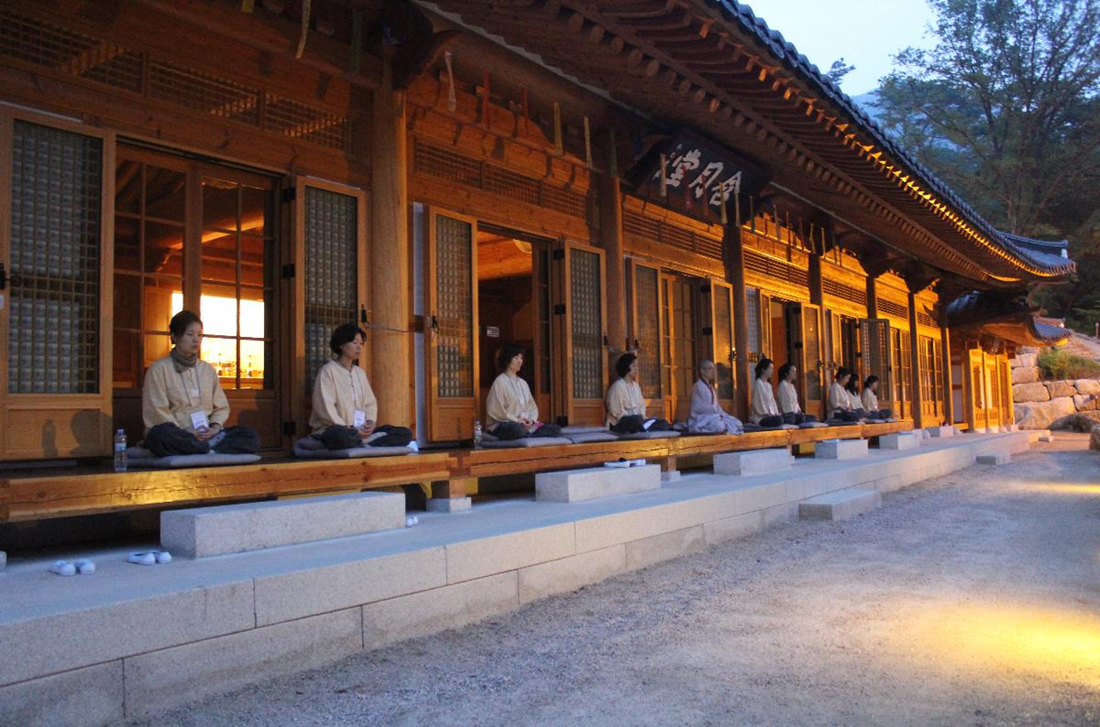 Source: templestay.com
Source: templestay.com
Jinkwansa is located on the west side of Mt. Bukhansan. It's the most one of the most popular place for templestays for Seoul locals.
Address: 서울특별시 종로구 견지동 우정국로 55
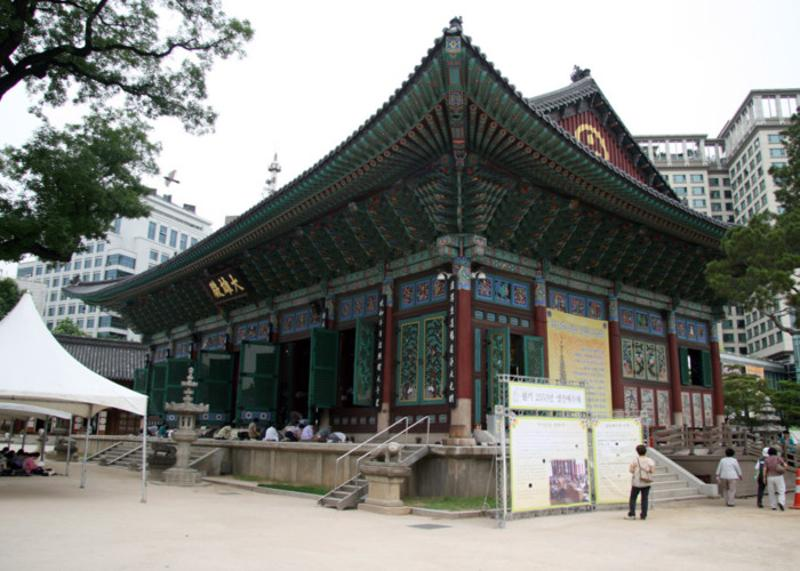 Source: visitseoul.net
Source: visitseoul.net
Jogyesa leads the Korean Buddhism, being the central temple for Jogyejong, the majority Buddhist community. You can find the largest Daeungjeon and statues here.
Address: 서울특별시 종로구 숭인2동 종로63가길 31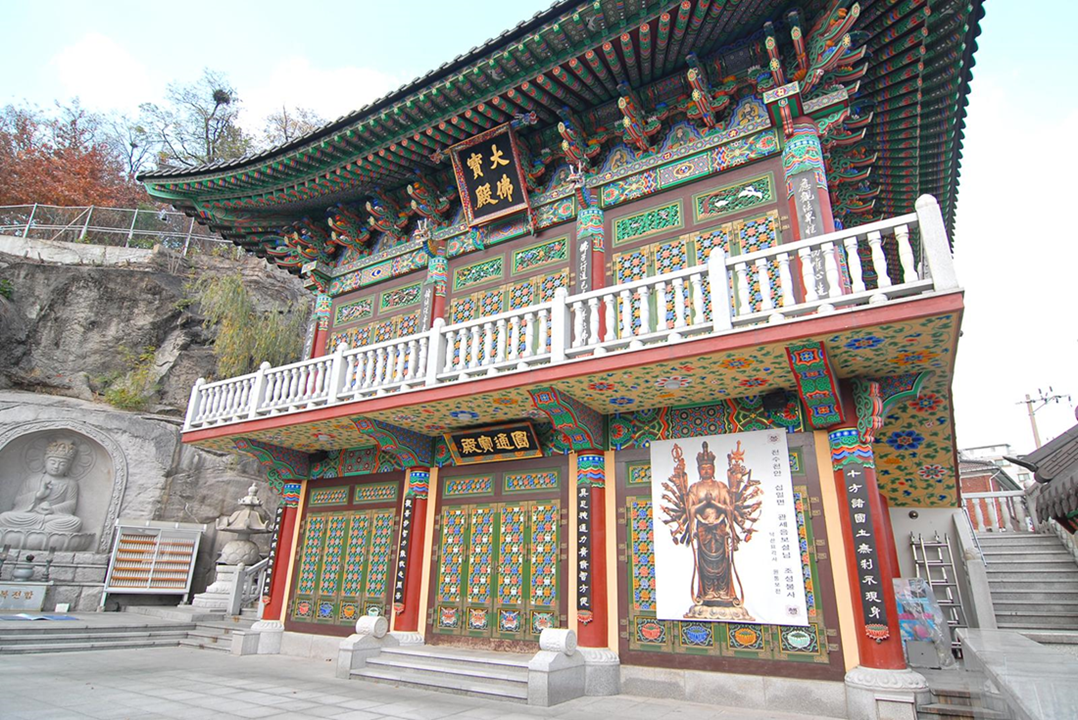 Source: templestay.com
Source: templestay.com
It's one of the newer temples in Seoul. Its history might not be long, but it's one of the most pleasant temple to plan your templestay.
[Gyeonggi, Incheon]
Address: 경기도 남양주시 진전읍 봉선사길 32
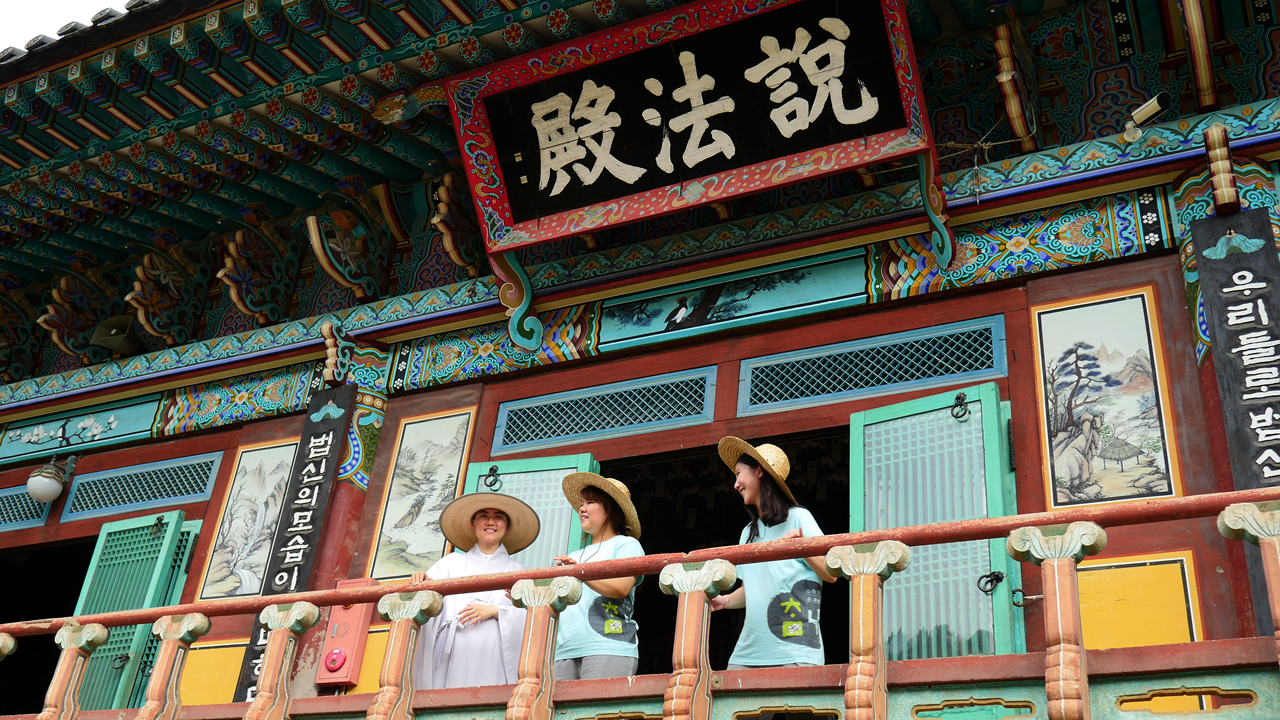 Source: templestay.com
Source: templestay.com
Bongsunsa is the only temple available for templestays in the Gyeonggi area. Just for templestay participants, the hidden forest, which is protected by the UNESCO, is open.
Address: 인천광역시 강화군 길상면 전등사로 37-41
 Source: templestay.com
Source: templestay.com
Jeondeungsa dates back to the Three Kingdoms era and has a long and rich history. It has many national treasures, and it will be interesting to learn about each one of them.
Lotus Lantern International Meditation Center (Incheon)
Address: 인천광역시 강화군 길상면 강화동로 349-60
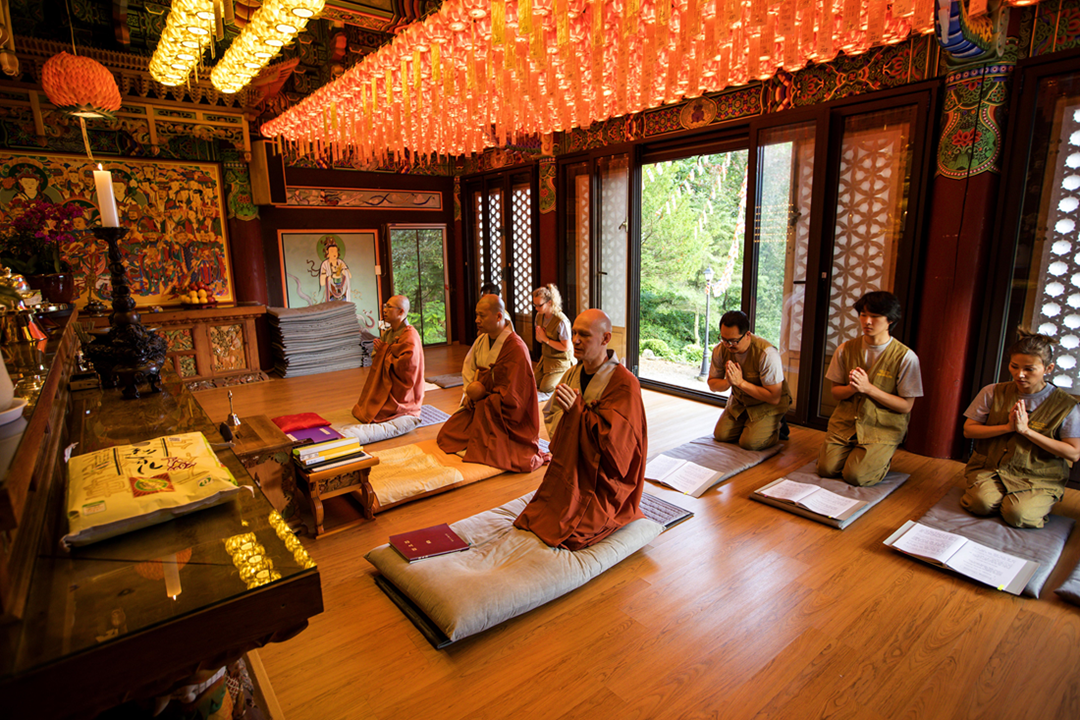 Source: templestay.com
Source: templestay.com
Like the International Seon Center, Lotus Lantern International Meditation Center was built to spread the Korean Buddhism throughout the world. English fluent sunims are leading the templestay experience.
[Chungnam]
Address: 충청남도 공주시 사곡면 마곡사로 966
 Source: templestay.com
Source: templestay.com
Gongju was the capital city of Baekje, and Magoksa was the spiritual center for the people of Baekje. It still holds many national treasures and historical sites. Also, there are magnificent forests for tracking right next to it.
[Jeonbuk]
Address: 전라북도 김제시 금산면 금산리 39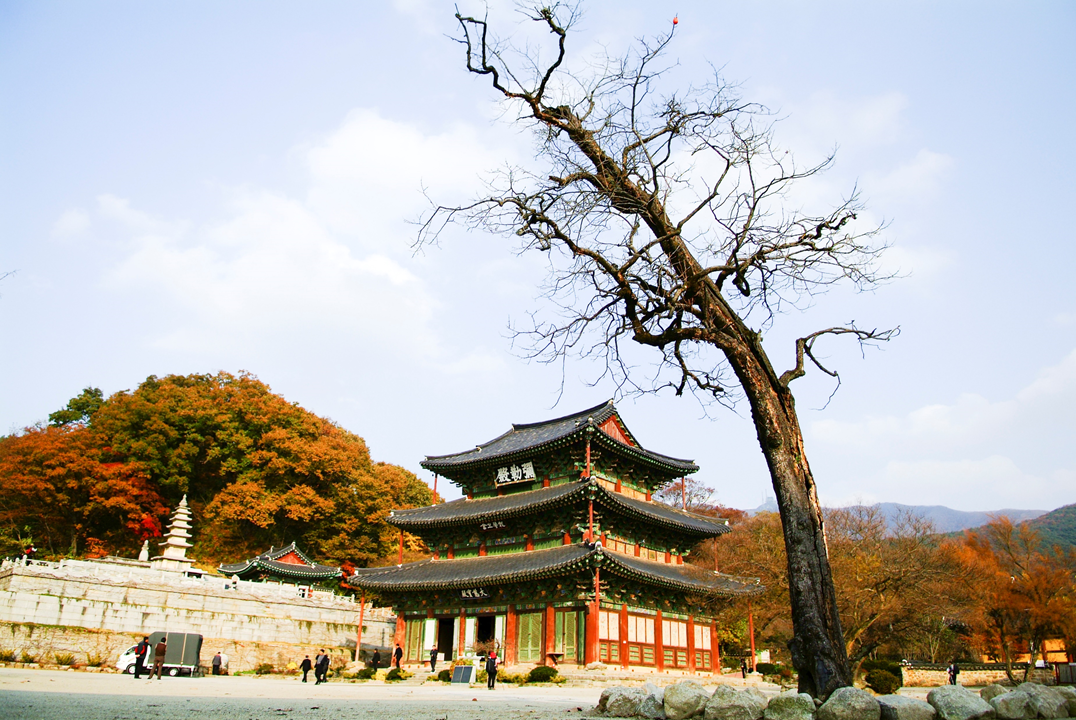
Unlike the temples in large cities, temples in Jeollado have a more ancient and peaceful atmosphere. Its Mireukjeon has a very unique structure and was designated as a Korean national treasure.
Address: 전라북도 부안군 진서면 내소사로 243
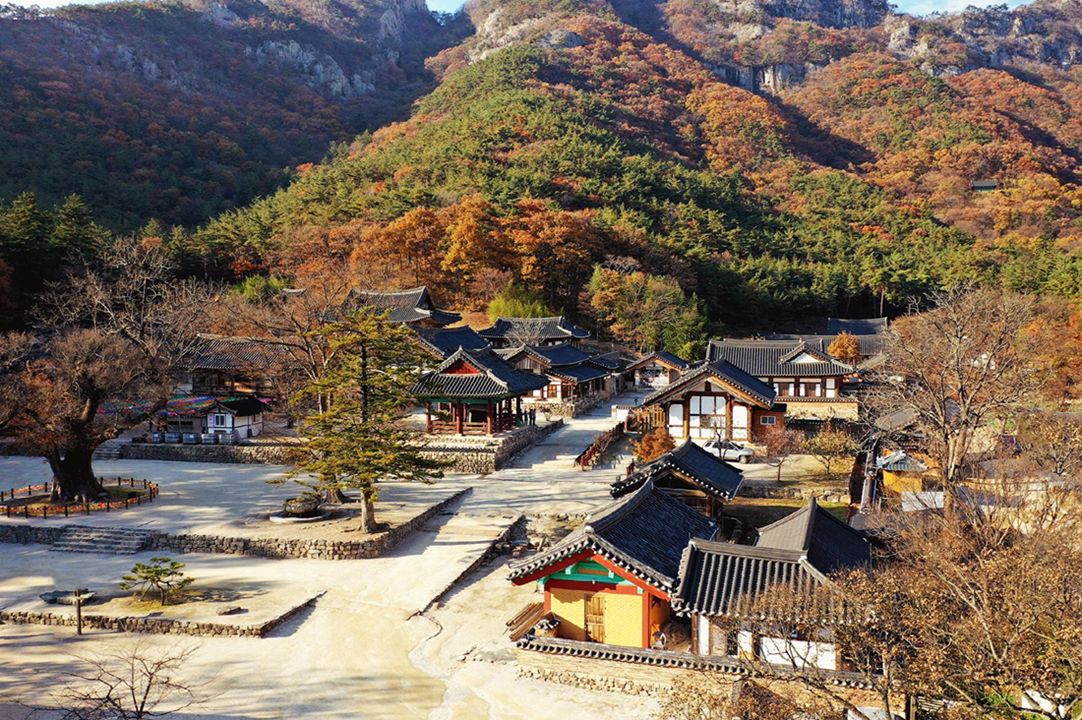 Source: templestay.com
Source: templestay.com
Naesosa boasts its harmony with the natural environment around it. In the Autumn, the trees are coloured in yellow and red, which creates gorgeous scenery.
Address: 전라북도 고창군 아산면 선운사로 250
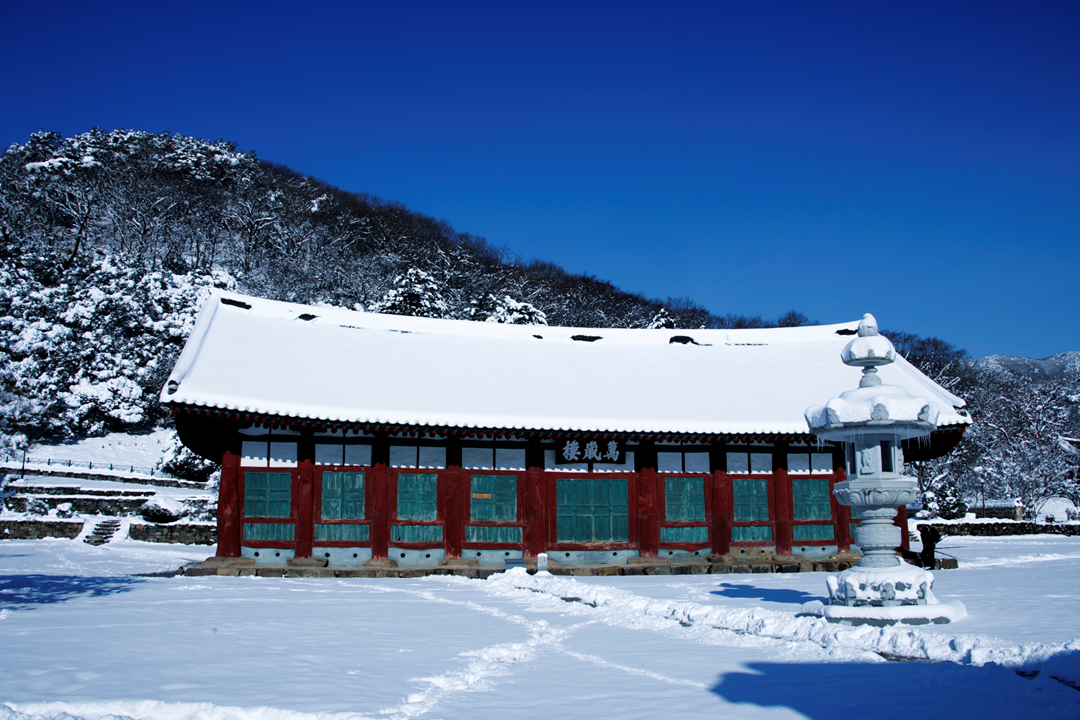
Seonunsa is a central temple for Buddhism in the Jeolla area. The place is famous for camellia trees, so plan a visit from winter to early spring.
[Jeonnam, Gwangju]
Address: 전라남도 장성군 북하면 백양로 1239
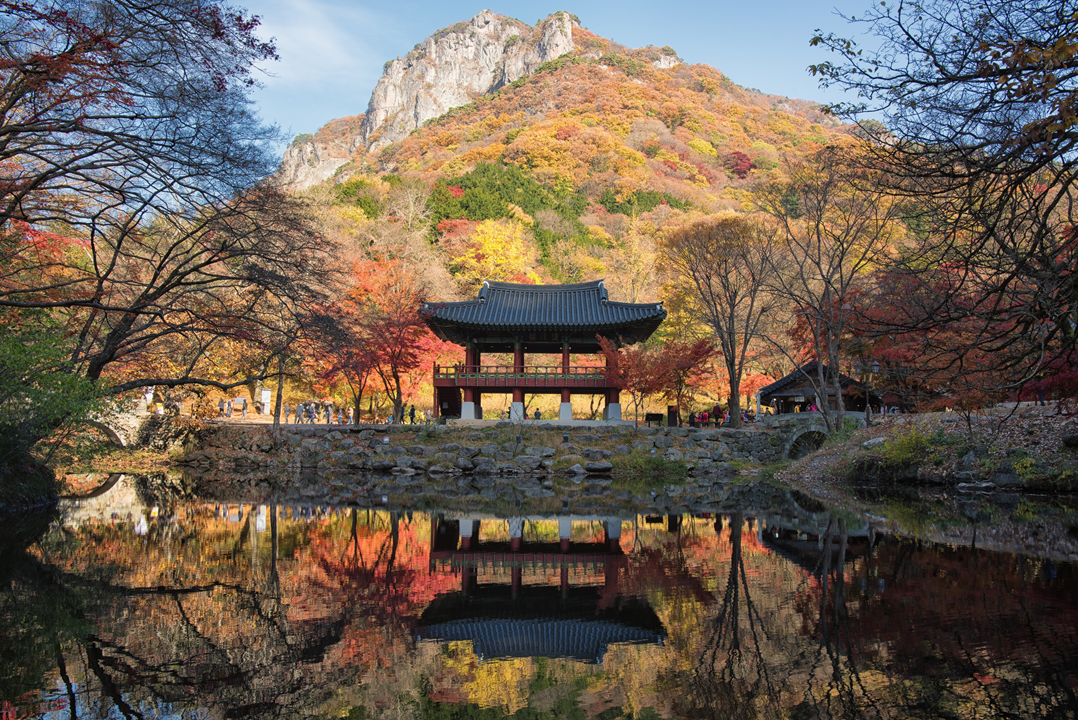
Baekyangsa is the temple where Park Na-rae did the temple stay on I Live Alone. Jeongkwan Sunim is famous for her temple cuisine and was introduced in one of the TV shows in the US.
Address: 전라남도 구례군 마산면 연기암길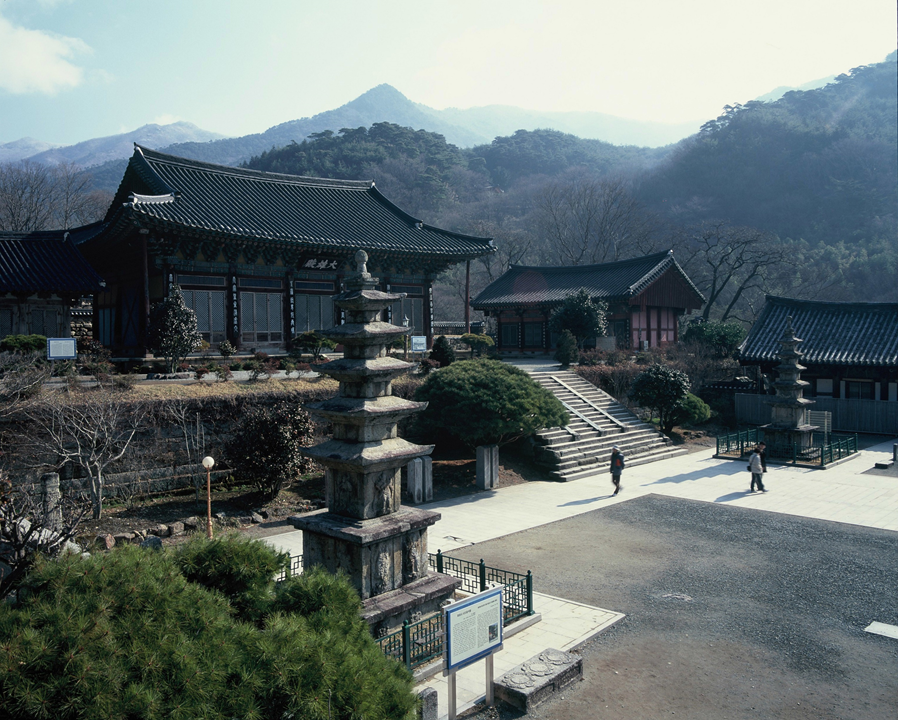
Hwaeomsa is named after Hwaeomgyeong, which is one of the most important Buddhist scriptures. The whole temple burned down during the Imjin War against Japan and was newly built during the Joseon Dynasty era.
Address: 전라남도 해남군 송지면 미황사길 164
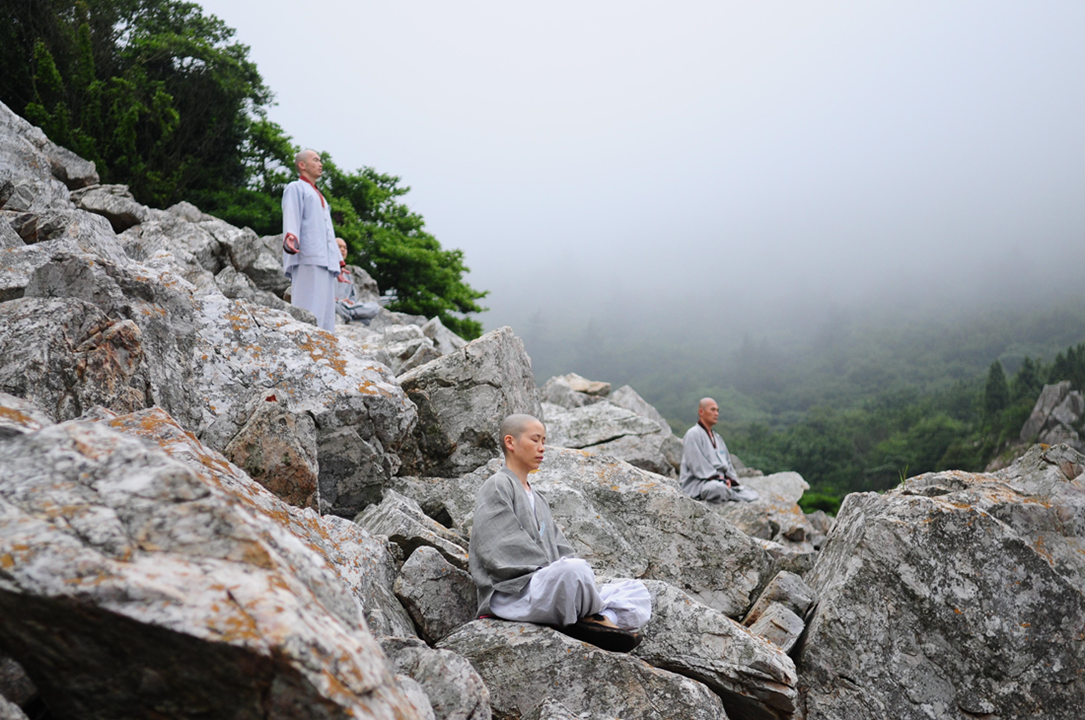
Mihwangsa is located in the southernmost part of the Korean peninsula. You can find the beautiful ocean in front and a thick forest behind. Enjoy the templestay with the most beautiful natural scenes.
[Gangwon]
Address: 강원도 양양군 강현면 낙산사로 100

Naksansa is one of the eight landscapes of the east during the Joseon Dynasty. There is a statue at the end of the temple, which was the largest Buddhist statue in Asia until 1977.
Address: 강원도 속초시 설악동 설악산로 1137
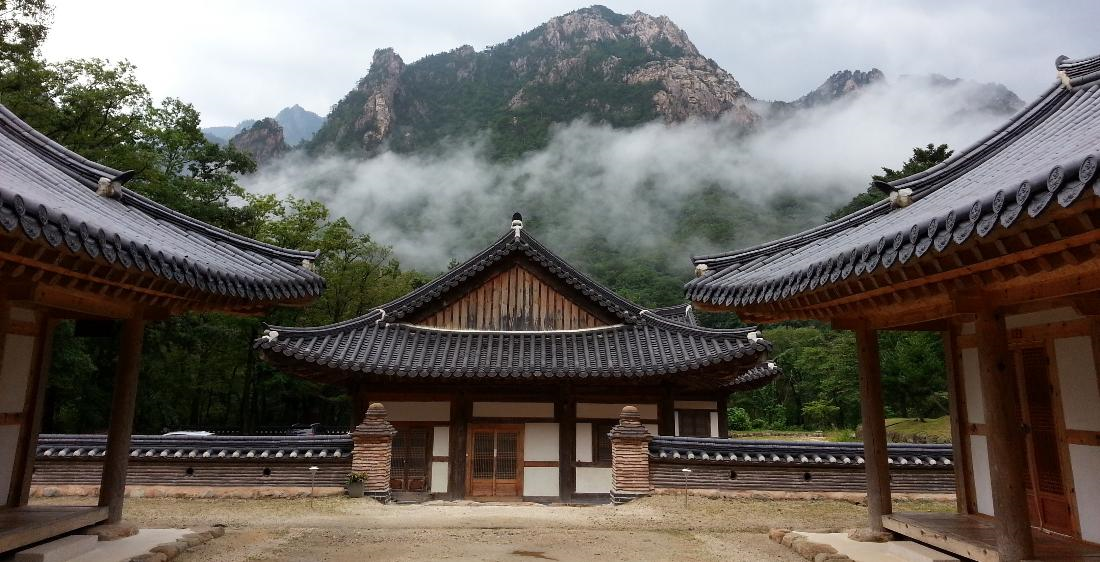
Sokcho is one of the must-visit cities in Korea, because of the beautiful beach and the great foods. It would be a perfect itinerary to add a peaceful temple stay in Sinehungsa.
Address: 강원도 평창군 진부면 오대산로
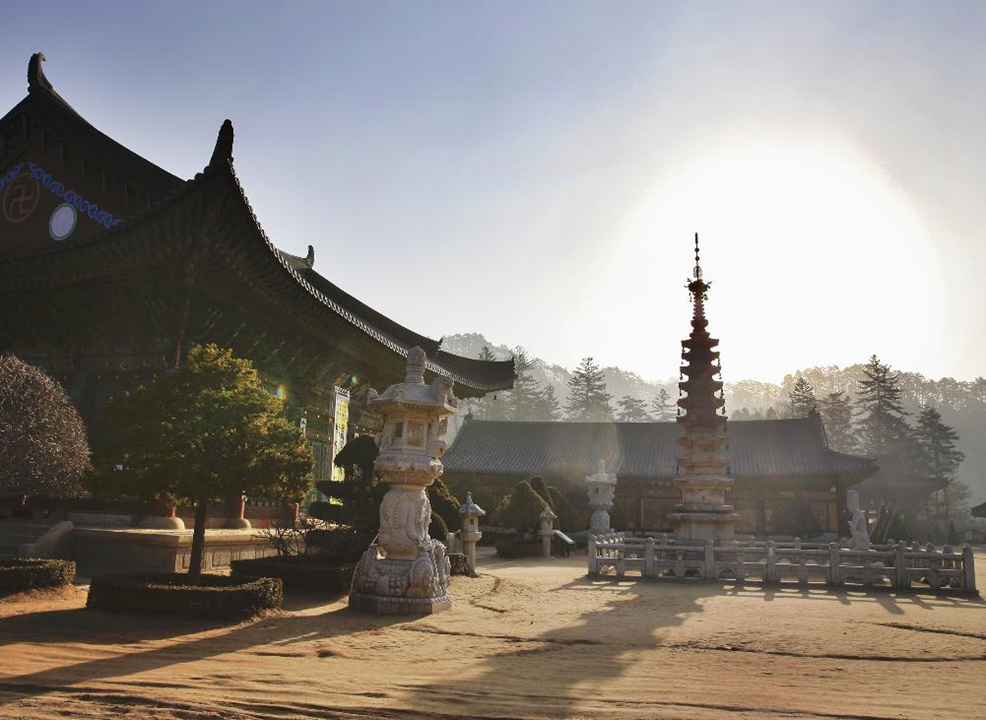
Woljeongsa is the most recommended place for a templestay. It's because of the beautiful temples, forest around it and the well-prepared programs. If you have to choose just one place for your first templestay in Korea, this is it.
[Chungbuk]
Address: 충청북도 보은군 속리산면 법주사로 405
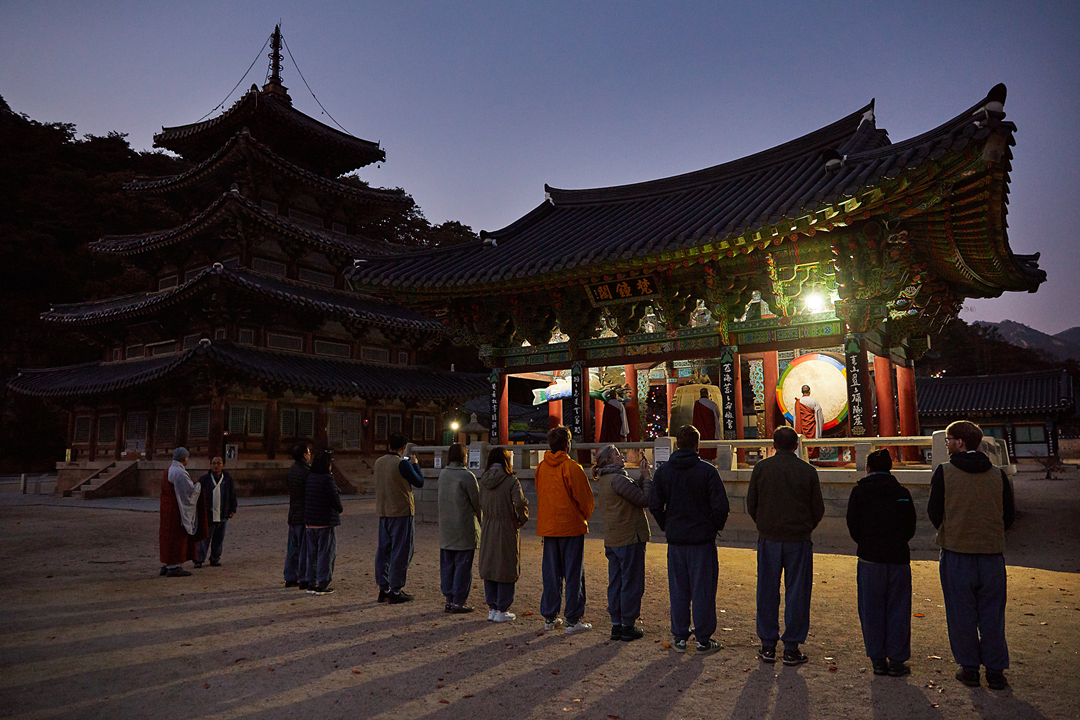
Beopjusa has Korea's only wooden tower and has many other national treasures, because of its rich history. You'll find many relics that will leave you in awe.
[Gyeongbuk, Daegu]
Address: 경상북도 경주시 진현동 15-1
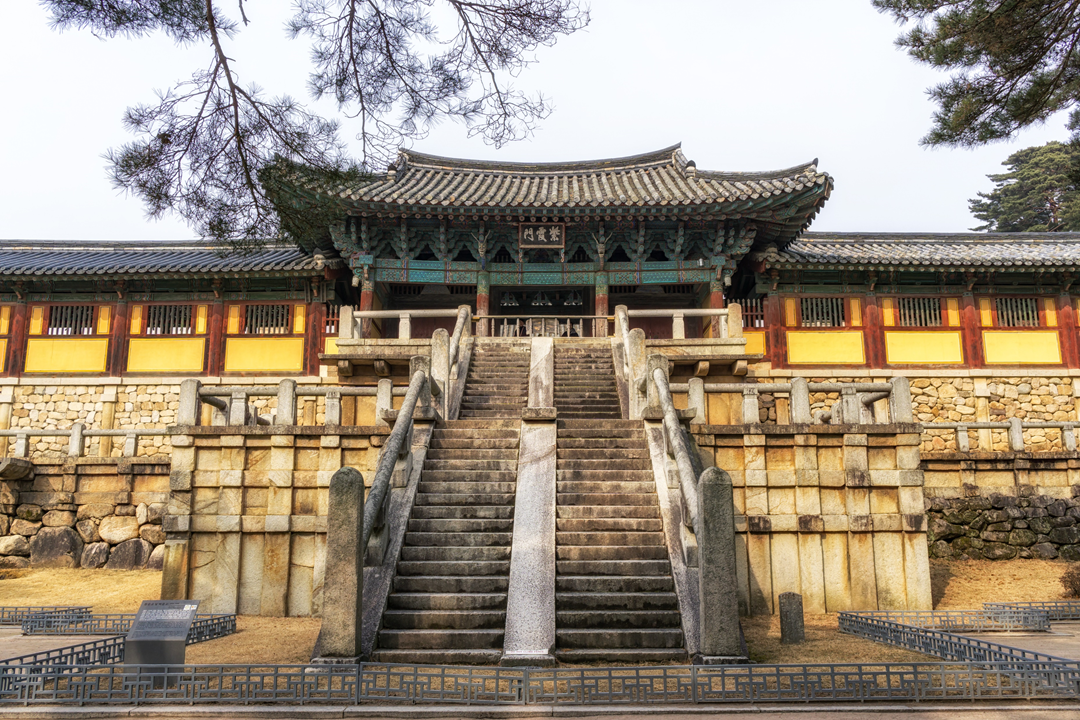
Bulguksa is a temple that represents Korean Buddhism and was designated as a UNESCO World Heritage Site. Seokgulam, located in Mt. Tohamsan, has the most beautiful stone sculpture of Buddha you can find in Korea.
Address: 대구광역시 동구 도학동 동화사1길 1
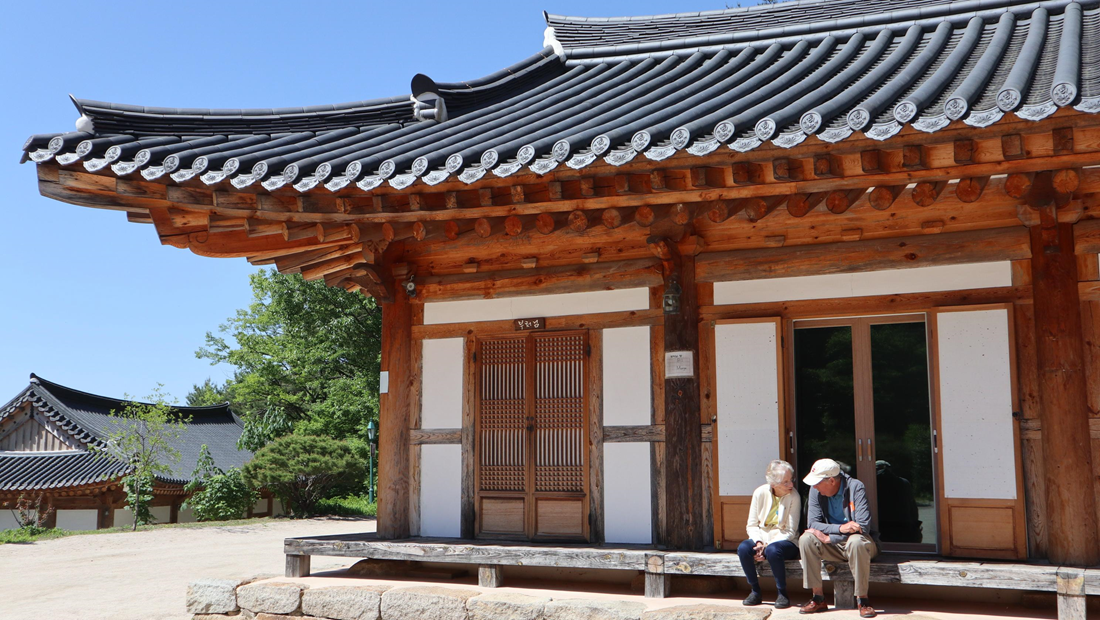
Donghwasa is the largest temple in Daegu. Stay in Donghwasa and get your body and mind away from the hectic lives of the city.
Address: 경상북도 경주시 양북면 기림로 101-5
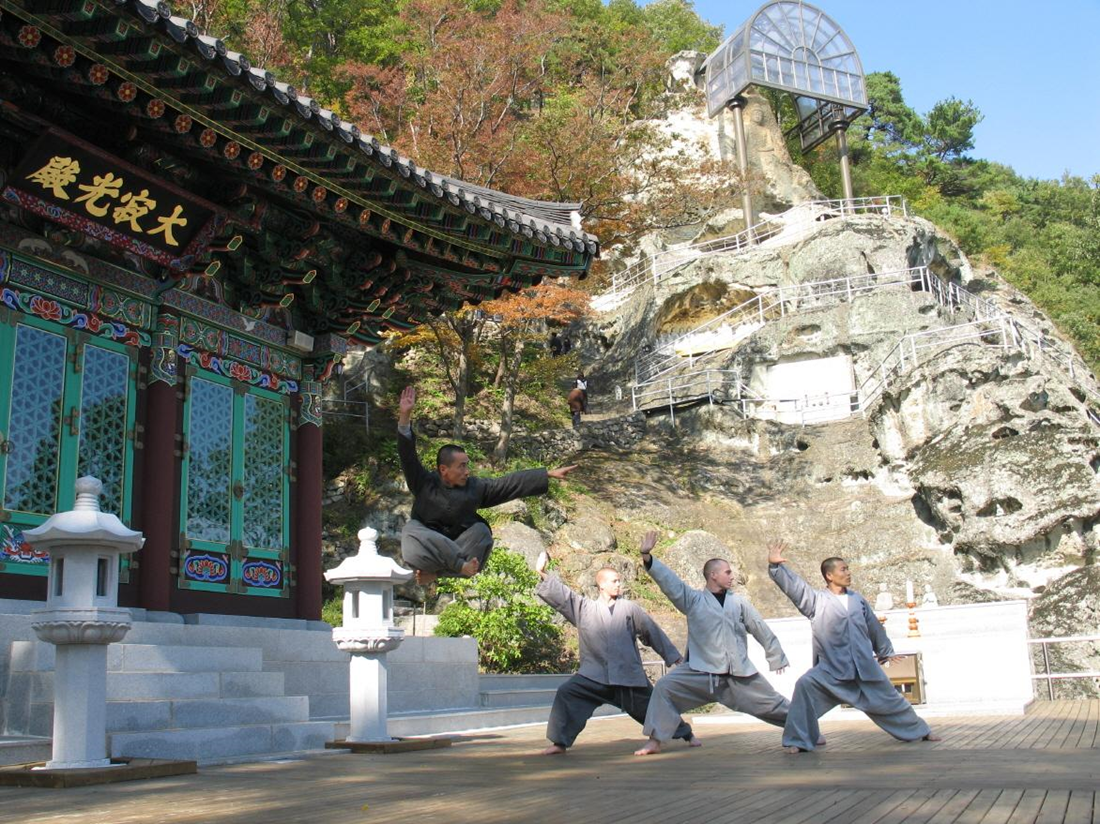
Golgulsa is famous for its Sunmudo training, which is a Buddhist martial arts. Not only can you experience a peaceful temple life, but learn ways to train your body and mind.
Address: 경상북도 김천시 대항면 운수리 216

Jikjisa is the first place to open a templestay program to outsiders. It is also famous as the home for Samyeong Daesa, who led the Sunims to fight against the Japanese during the Imjin War.
[Gyeongnam, Busan]
Address: 부산광역시 금정구 청룡노포동 범어사로 250
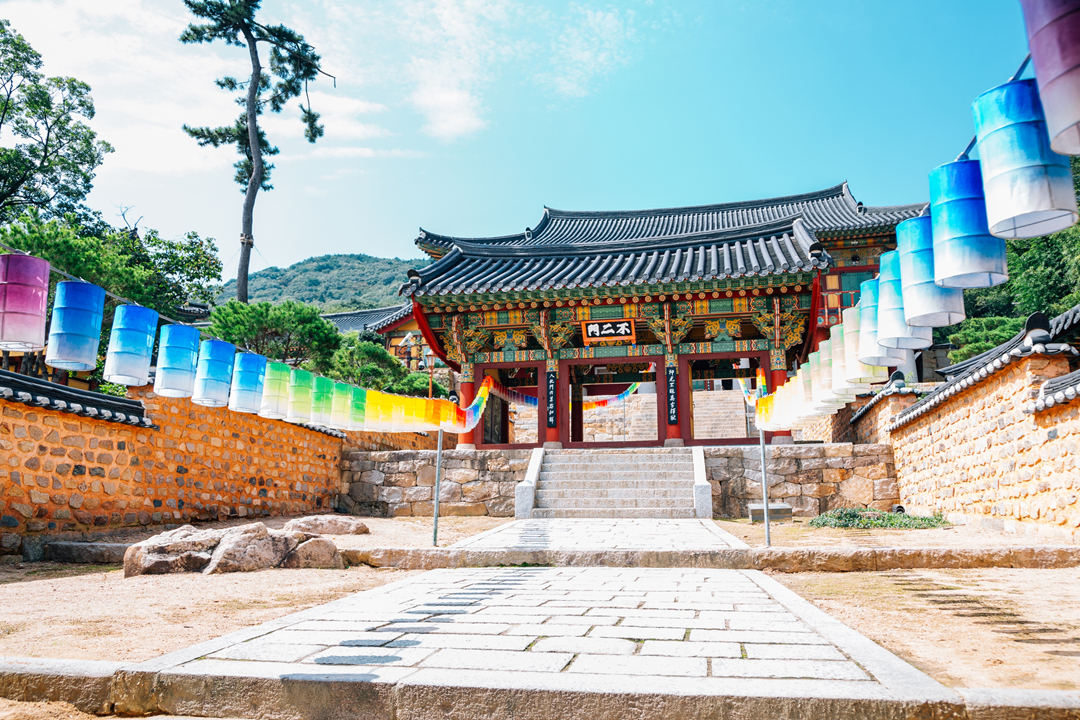
Beomeosa is famous for being a place where many great masters studied, such as Master Wonhyo. It's a perfect place to meditate and look inside and learn about yourself.
Address: 경상남도 합천군 가야면 해인사길 122
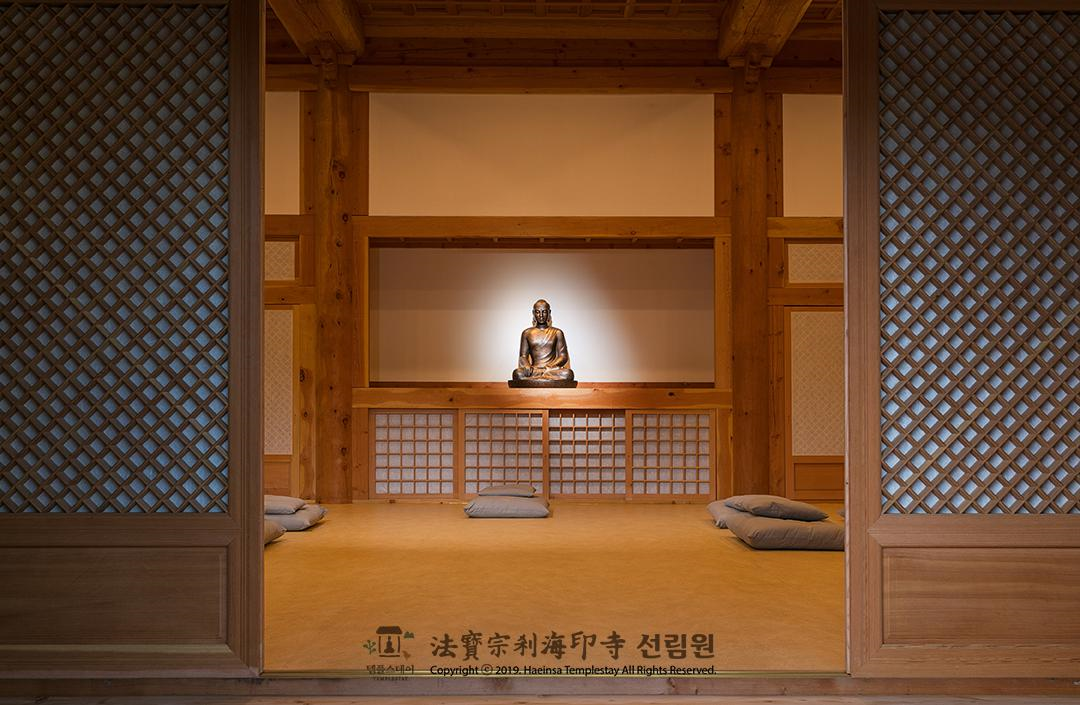
Haeinsa is the home for Tripitaka Koreana, which is a UNESCO World Heritage. Tripitaka Koreana is called Palman Daejanggyeong, which means 80,000 Triptaka pages. It's a must-visit place if you are interested in Korean history and relics.
[Jeju]
Address: 제주특별자치도 서귀포시 대포동 이어도로 293-28
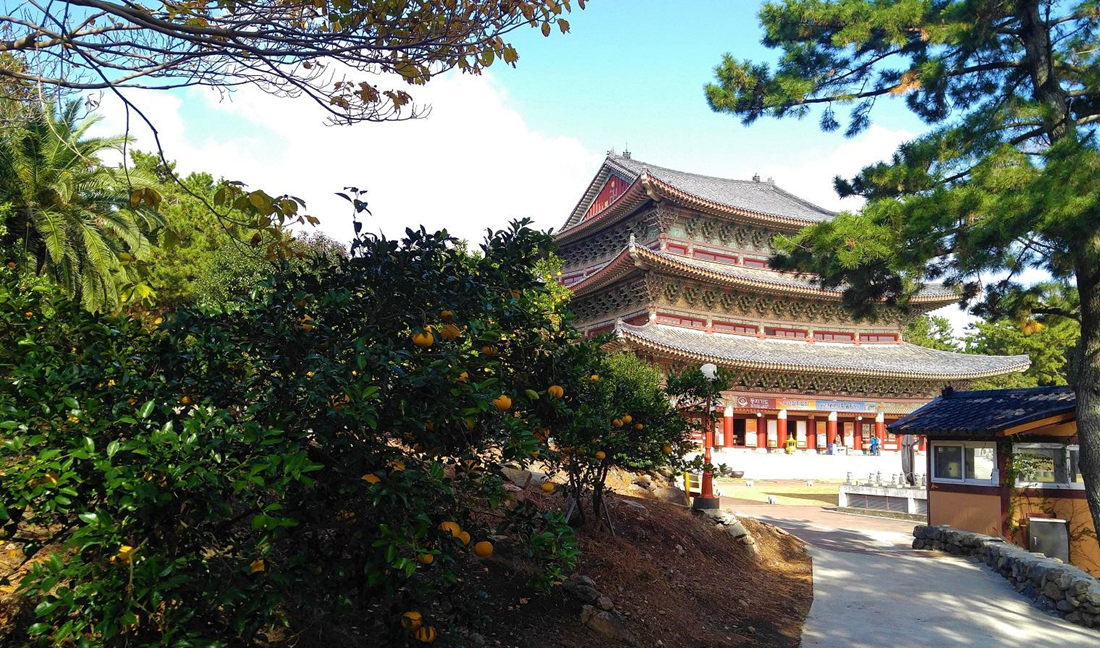 In Yakchunsa, you can enjoy the beautiful natural sceneries of Jeju Island's beach and Halla mountain behind it. If you are looking for something special to do in Jeju, a templestay in Yakchunsa will be perfect for you.
In Yakchunsa, you can enjoy the beautiful natural sceneries of Jeju Island's beach and Halla mountain behind it. If you are looking for something special to do in Jeju, a templestay in Yakchunsa will be perfect for you.
Activities
Temple Tour

Walk around the temples and learn what meanings each structures have. Daeung-jeon, Myeongbu-jeon have different statues of Bodhisattvas, and the prayers in each structure are very different from each other.
108 Prostrations

Jeol (Prostration) is a deep bow that you do to show your respect and humbleness to the Buddha.
They call it ohchaetuji, which means that you put five parts of your body to your ground; knees, elbows, and forehead. It shows that you dedicate your life to the person receiving the Jeol. Bae is the numeral for Jeol, which you use in 108-bae.
Writing Wishes

Hang letters to the Buddha for your wishes to come true. Write your wishes and tied it up at the bulletin board. It will be burnt at the ceremony of Buddha's birthday, and hopefully, all your wishes will arrive at the heavens.
Bell Strike Ceremony

You'll get to strike the bell, and feel the resonation. Even though the sound is loud, it doesn't hurt but make you feel at peace.
You can't be too quick or too slow. Count to seven until you strike next. This ceremony takes place before the 'Yebul', which is a Buddhist version of a Catholic Mass. It's a notice to let people know that you should gather for prayers.
Yebul

At theyebul, the chief monk chant the Buddhist prayer, and participants vow to the Buddha accordingly. The chanting sound and the moktak (wooden percussion) beat are so rhythmical it sounds like a song. The ceremony was about 1.5 hours long but it didn't feel boring or tiring.
Nightscape
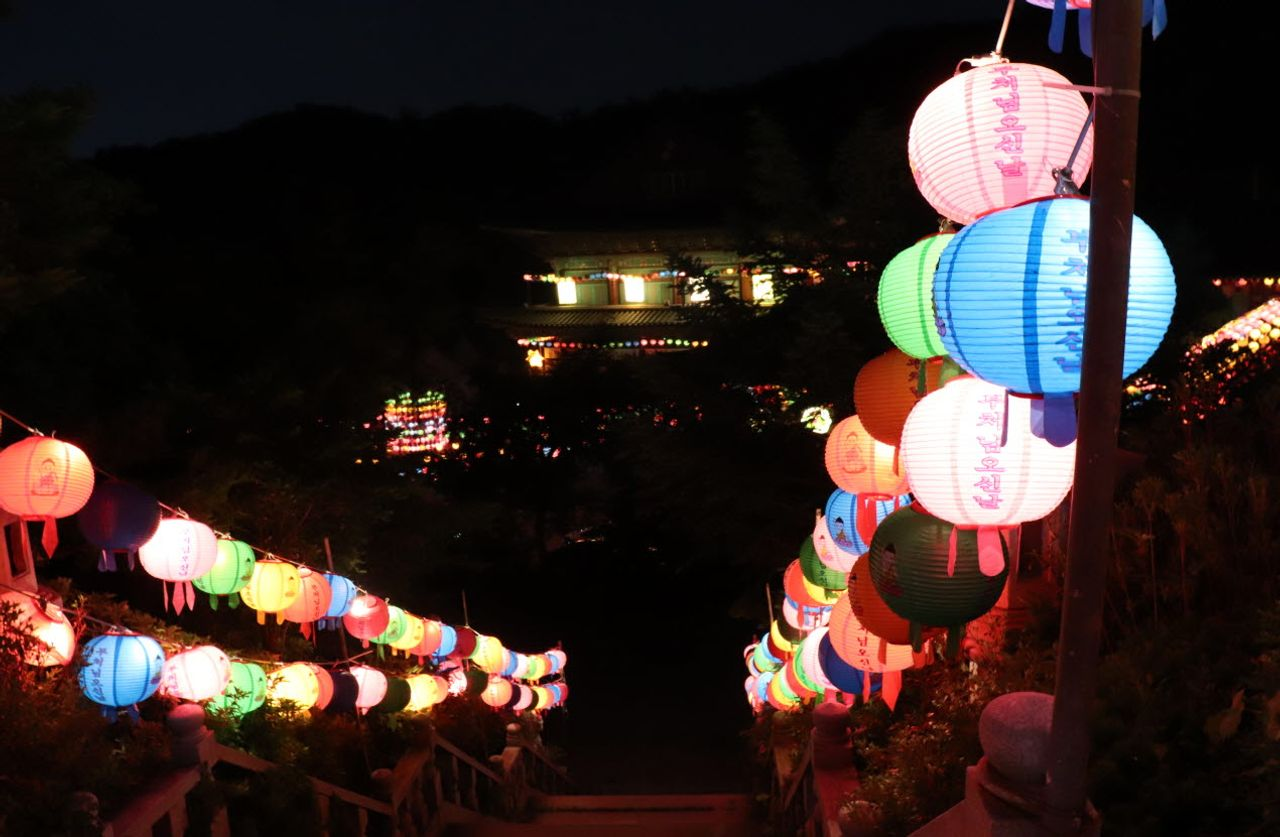
After all the prepared activity was over, you get to walk around the temple for sightseeing. At night you get to see all the lights lit up and all the colours are just beautiful. The atmosphere of the temple becomes even quieter and makes you feel at peace.
Meals
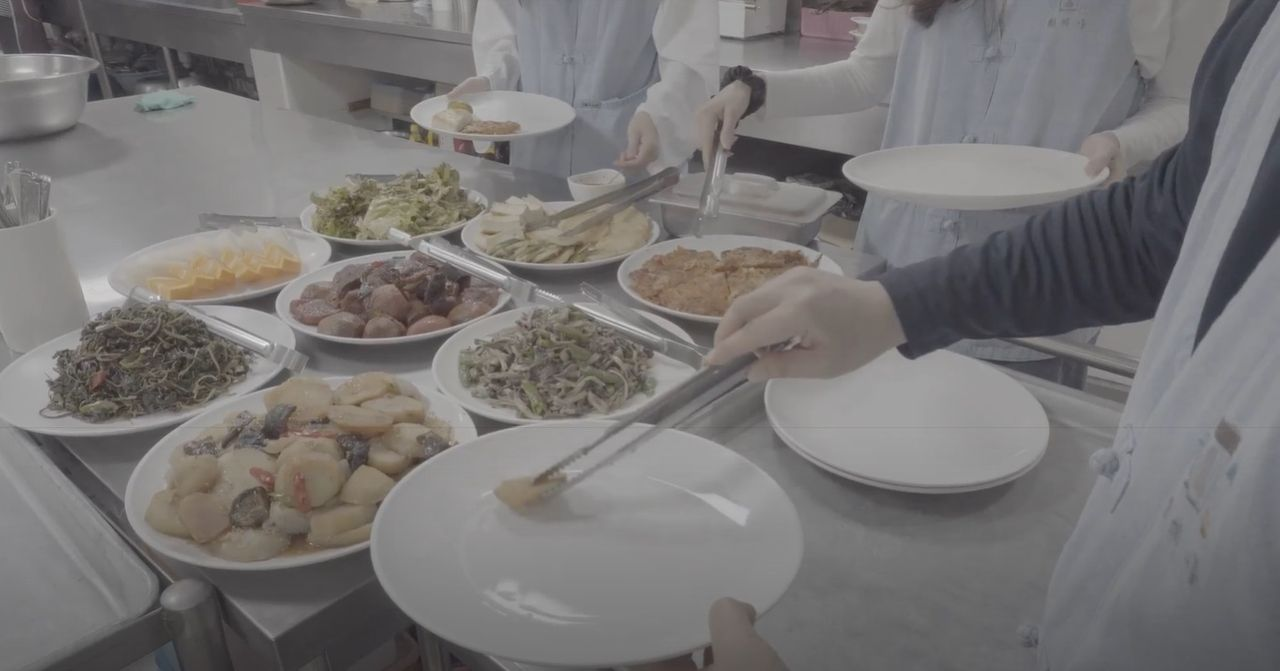
There are fresh seasoned vegetables and fruits. These vegetables are what make the Korean table authentic, and you can feel the taste of each ingredient.
In Buddhism, all life is equally precious, and you shouldn't let any life be wasted. You should take only as much as you need, and don't make leftovers.
Hiking
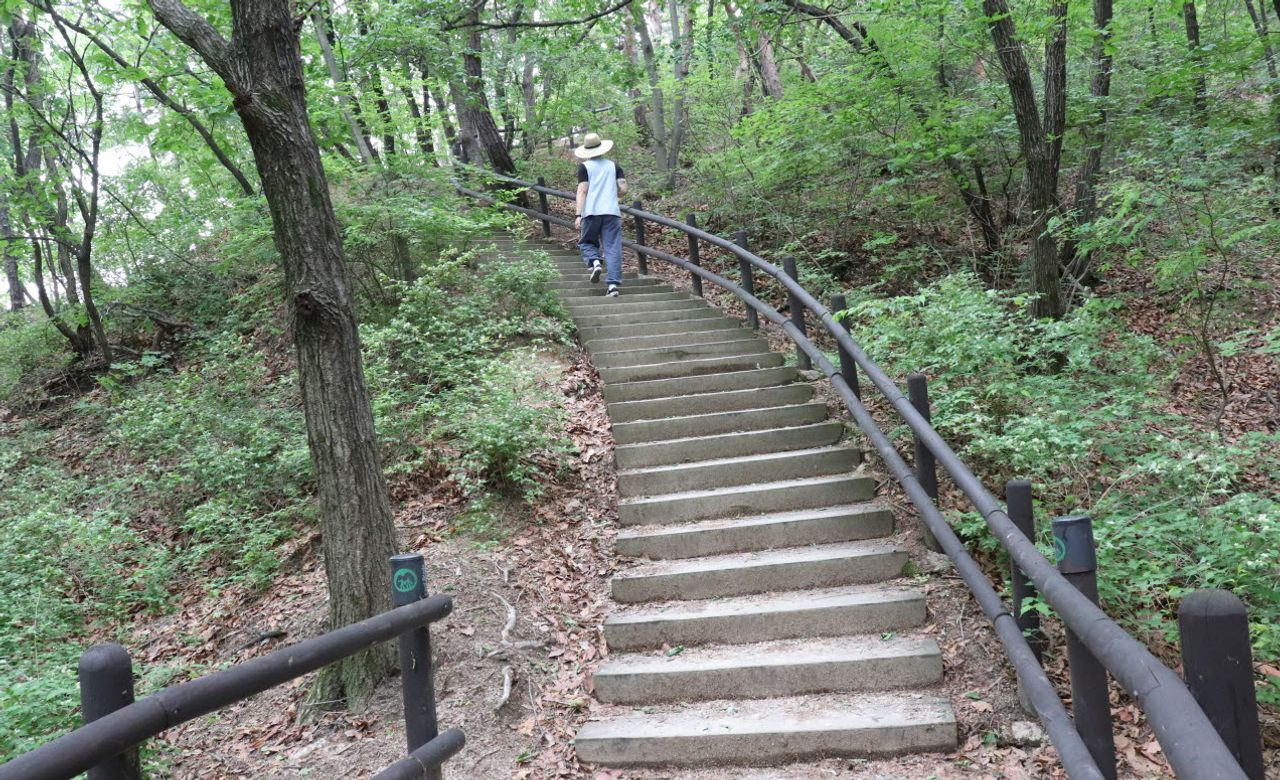
Temples are mostly located in the middle of a mountain. Walk along the trails and leave all the struggles behind you.
Tea Session
The last event for the temple stay is the tea session with the monk.
Talk freely about anything you were curious about; about the temple life, being a monk, all the troubles in life, and anything you wanted to ask. The wise words will help you get your mind straight and give you the courage to get back to daily life.
A video guide to a templestay in Hwagyesa!
If you have any questions or suggestions leave a comment or send us an e-mail at help@creatrip.com.

